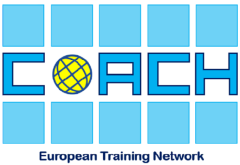CoACH
Advanced glasses, Composites And Ceramics for High growth Industries

Overview
Investigating the joining of incompatible materials and selection of effective diffusion barriers are one of the major challenges of device manufacturing in electronic industry.
Assembling of some functional materials becomes slightly more complicated since they are designed to work at high temperatures and might overcome various phase changes even during conventional joining. Hence, suitable low-temperature joining methods are needed to reliably integrate temperature limited thermoelectrics into engineering structures, i.e. thermoelectric modules (TEM) or generators (TEG).
Innovative joining of mid-temperature thermoelectric devices is being developed under the ‘Advanced Glasses, Composites and Ceramics for High Growth Industries (CoACH)’ project funded by the Horizon 2020 framework program, tasked with developing cutting-edge joining and assembling process of incompatible and relatively problematic elements into a module, i.e. thermoelectric material, metallic electrode and ceramic substrate.
Project end date
December 2018
Aims
The project aims to successfully identify and produce suitable material for this purpose taking into account cost and automation requirements for industry.
The following factors have been identified for consideration during research:
- Labour work - it has been reported, that ~43% of TEGs (thermoelectric generators) price arises from the ‘made-hand’ labour cost and simple upscaling and automation of module production process could significantly reduce cost per module.
- Thermoelectric material cost- most of the ‘promising’ and highly efficient thermoelectric material contains rare-earth elements such as cerium (Ce), lanthanum (La), neodymium (Nd), praseodymium (Pr), terbium (Tb), ytterbium (Yb) and yttrium (Y) and their relatively high market prices reduce their possible commercialisation.
- Material losses – thermoelectric material after consolidation process (in which it is delivered as a disc-shaped pucks) must be cut into regular shaped thermoelectric pellets (3x2.5x2.5 mm standard). Such a process generates significant amount of materials waste which cannot be re-used in fabrication process.
- Diffusion barrier deposition – commonly used diffusion barriers in microelectronic field are nickel and chromium, which prevent inter-diffusion between high-tech material and other device components (i.e. solder). Nevertheless, very often, due to complicated and extended composition of thermoelectric material, those elements are unsuitable for high-temperature application. One of the reported solution is deposition of chemically more stable elements i.e. gold (Au), palladium (Pd) and platinum (Pt) as a diffusion barrier which are expensive and influence device manufacturing costs.
Partners